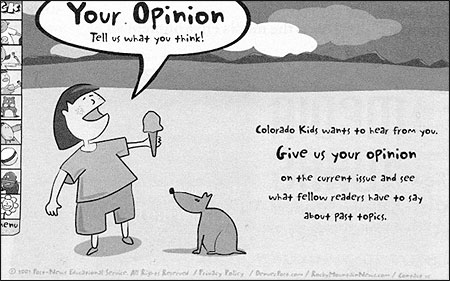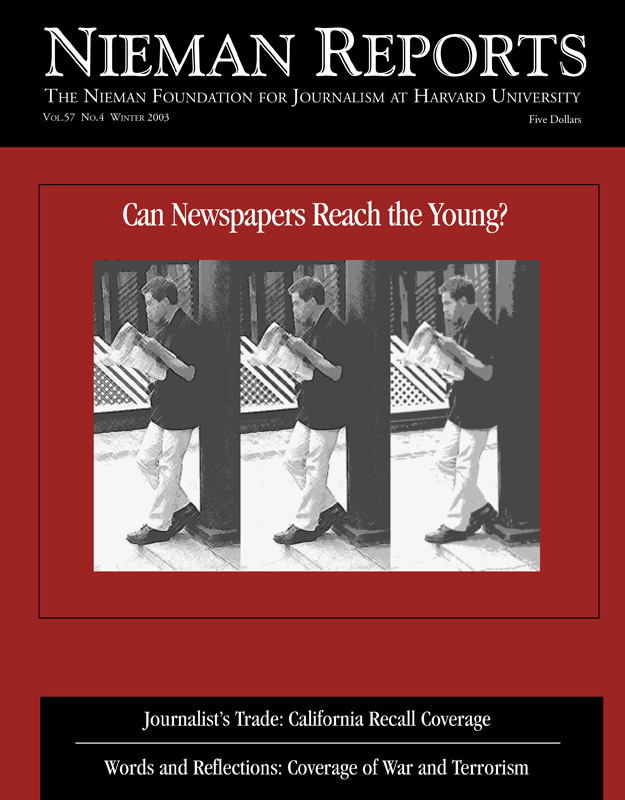This scene happened recently in São Paulo, Brazil, where I live. As I approached a young man typing in front of a computer, he was writing: blz, bró, vamo tcl? If anything, I can guarantee that those words are not Portuguese, the language we speak in my country.
“What is that?,” I asked, showing what I discovered later to be a sign of unrecoverable ignorance. This is Portuguese, I was assured, and this is how we write to each other—we have no time for spelling the words, so we contract them. Translation of the message: “How is it going, brother, everything nice? Do you have any time to exchange a few words with me now?”
It came to me as a vision: If these kids are communicating in that language, it is no wonder that they don’t read what we write for them. Have I seen a text written like that in a teen magazine? No. Have I seen a text written like that in a newspaper supplement for young readers? No. Have I seen it in a book? No.
The general idea—research shows it, friends and colleagues share their stories, and we all have our own—is that kids don’t read. (Let’s not mention Harry Potter, please. J.K. Rowling has written many books, and kids love them all. And no one has been able to write the way she does. She is unique. I don’t accept her books as a generalizing evidence that kids read. They don’t. They read her Harry Potter books.)
Young People and Print
I am forcing an argument here, but let’s accept it, to make it easier to understand my point: We, the print media in general, are not communicating with the young audiences. Period. Let’s begin by defining a young audience. My young reader is 15 years old, but could be 12 or 18. But let’s stay with the 15-year-old boy. He does not read. Now, why is that? Let’s have a look at this problem, step by step. I divide humankind into two main groups of people: the “paper readers” and the “electronic readers.” There are lots of people in between those two groups, but they don’t need our help: they read papers and magazines and books, they navigate the big net, etc.
Each day we lose an important number of “paper readers”: When people who are more than 60 years of age die, they’ve spent two-thirds of their lives reading books, newspapers and magazines. And each day we gain what I call “electronic readers”: Kids coming to this world will read much more through electronic devices than from paper. Computers in the house and at the school, electronic games and cellular phones—those will be the primary communication vehicles in their lives. Even before the time they enter school, these kids are already multimedia people.
Will they read books, newspapers and magazines? Probably, but as a complement to the electronic media. The difference is that today we complement the print media with the electronic media. This generation (and subsequent ones) will do the opposite.
Why don’t we in print media attract these young kids? Because we don’t understand the simple truth that young kids are multimedia people, and that’s why they don’t read the supplements we publish for young people. A supplement is an anachronous device and to them a newspaper is an odd object. They relate better to a magazine because it’s a friendlier object, smaller and colorful. But magazines they read talk about issues they are interested in: fashion, beauty, stars and gossip for girls; rock music, sports and beautiful, provocative young ladies for the boys.
There is already a new factor in their reading experience that makes all the difference: They go online because their magazines invite them to. A bridge has already been built between the magazine and the Web site. Under the same brand, they read (or watch) in paper and play online. Girls can try online the same dress they see in the pages of the magazine. They build their virtual body on the screen and try as many jeans or skirts or colors as they want. Sometimes they buy the clothes online, instantly.
There are not many magazines doing that in the world, and they are already late. But most publications allow readers to create communities around their own interests, hosted on their site, and in these virtual communities they chat and chat. Some magazines put the fashion editor online to answer questions. The online publication is the extension of the publication in paper. They coexist.
But these magazines are publishing kids’ stuff. They give them what the young want to see and read. Meanwhile, no newspaper and no magazine is reaching this audience in ways that discuss with them issues they’ll be facing in their adult lives: social, political, economic and cultural issues.

An image from the Colorado Kids website.
Bridging Gaps Between Us
As these younger readers age, more and more electronic readers will reach the age when usually they would turn to newspapers and magazines. But will today’s 10-year-old boy read a newspaper when he gets to be 18? Or a magazine? In his cellular phone, today, this 10-year-old has fun exchanging messages with friends. On this phone, he also gets and sends e-mails, takes pictures and sends them immediately, listens to music, watches videos, and checks his schedule as if it was a palmtop. If he wants to, he can watch the news. He can even use it as a telephone.
How much more multimedia can a person be? And in a multimedia world such as this, with gadgets that are also fun to use, what becomes of the role of print media? In this boy’s life, paper has become almost nonexistent. Why? In part, it’s because young people don’t like the way we write, and they don’t like the look of our pages. In print, we’ve been doing basically the same thing for decades, and this generation is letting us know it will not accept the way we do our job.
We are “monomedia” when they are “multimedia.” These kids want us to be multimedia, too, and to reach them we will need to stop thinking in ways that are monomedia.
Prestigious brands and credible publications have to engage young readers both in print and on the Web, using different media to offer what they expect from us. Young people should be able to get whatever information, analysis, or opinion they need or want from their favorite paper/electronic publication as part of a large multimedia system. The paper and electronic publications must complement each other, but doing this can prove difficult since younger brains do not tend to relate to words and images in the same way older brains do. While we tend to separate out the ways in which information is delivered, younger brains tend to blend these various components—paper, online, news, messages—together with less effort than we do.
With kids’ minds and experiences being so different from ours, we’ll never succeed without inviting them to join us in figuring out ways to bridge the gap between the paper generation and the electronic one. To try to understand the way they think, we ought to watch them as they write, “uozzzup, bro?” and read their Weblogs. We’ll need to follow their discussions about issues that concern them as we try to capture a sense of their needs and interests, and many times they do this online. Then we can produce vehicles for them, done in ways they understand and not in the way we think they should understand.
It is important to remember that differences between paper readers and electronic readers are much more than about how they read. There is a cultural gap between us that is perhaps larger than the technological gap that separates us. Technology is available to all of us, but in the ways we relate to it we are very far apart. Nor will we attract younger people by using objects they are rejecting, mostly newspapers but magazines, too.
I see little experimentation being done with the younger crowd concerning journalism, but there are a few good examples. Though I’ve said that supplements for young readers don’t usually work, what The Denver Post does is an exception. It publishes a supplement called Colorado Kids, done by a staff of kids seven to 13 years old. They do the interviews, asking questions adults would not. And they write the text. Other teens instantly recognize that these pieces were not written by adults and that adds credibility to the stories.
Maybe we shouldn’t care so much about paper. Is our real concern whether magazines and newspapers disappear, or is it that we want kids to read? Does it really matter if they read from a paper page or on a screen or behind a piece of plastic? To me, if they read, then the object in which they exercise their intellect is of no importance. As long as they read.
This will not be a simple challenge to solve, but it is not impossible, either. An electronic newspaper and the electronic magazine targeted for a young audience are still waiting to be invented. As we older editors continue to try to attract younger people with our paper objects and Web sites, I suspect they are still waiting for an electronic publication that will combine newspapers, magazines and what we call “the rest” and will feel like it belongs, like it fits, in their lives.
Either we invent this publication, or they will do it without our help. And this second option is what terrifies me. Are we, editors, condemned to a different mission? If so, what is going to happen to our role as the eyes and watchdog of the society? But this is another serious discussion. Uót’u tink, bro?
Thomaz Souto Corrêa, a Brazilian journalist, worked for 40 years as editor and editorial director for the largest magazine publishing company in Latin America, the Abril Group. He is an editorial consultant and member of the Management Board of the International Federation of the Periodical Press.


